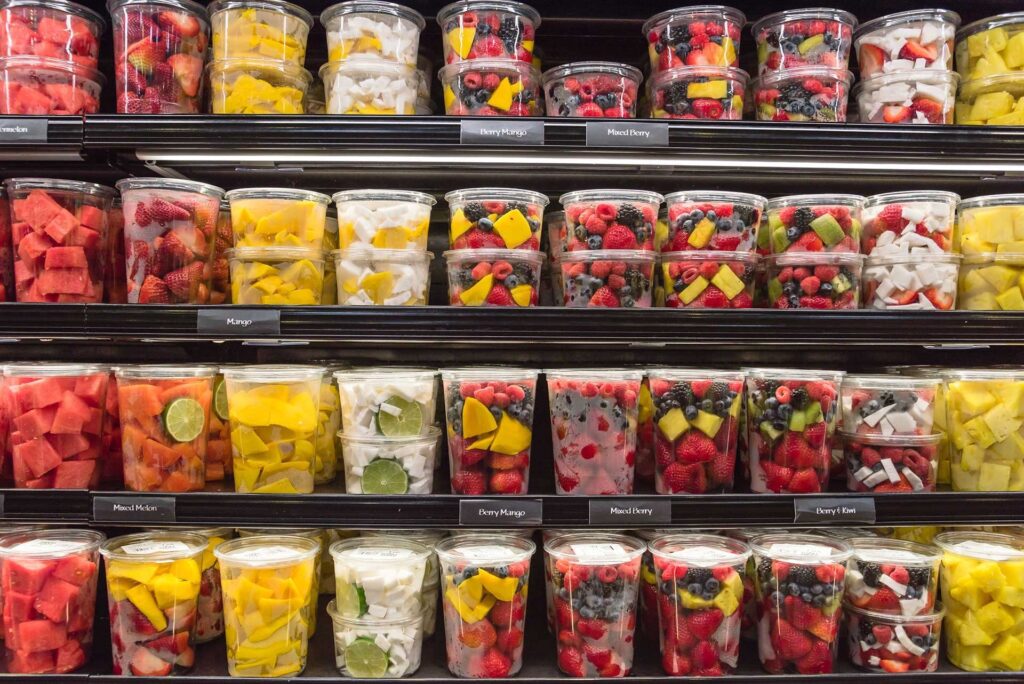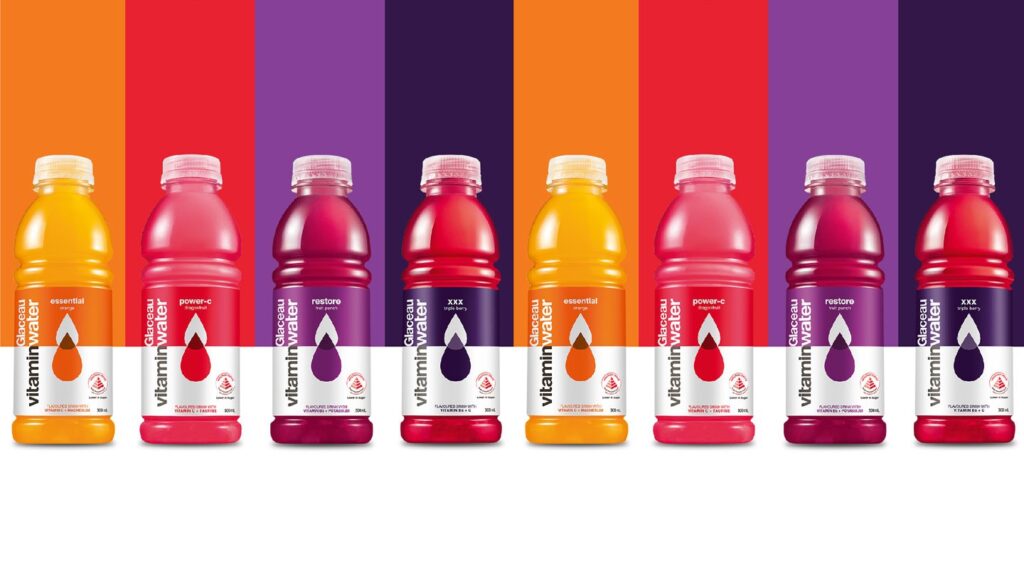The food manufacturing industry plays a vital role in the global economy, transforming raw agricultural products into consumer goods. Despite its necessity and vast scope, companies in this industry often operate on thin margins, making profitability a continual challenge. One solution that is increasingly making its way into the spotlight is the adoption of value-based pricing strategies.
This article will explore how these strategies can be a key differentiator for food manufacturing firms aiming to enhance their profitability in an industry marked by unique challenges and opportunities.

Industry Challenges Faced by Food Manufacturers
The challenges below are faced by the food manufacturing industry, specifically focusing on aspects related to pricing strategy and profitability:
1. Regulatory Compliance and Pricing:
Regulatory changes can directly impact the cost structure of a product, forcing companies to reassess and potentially alter their pricing strategies. Compliance costs may need to be passed onto consumers, but this might not be viable in highly competitive markets without risking market share.
2. Supply Chain Costs:
Fluctuations and complexities in supply chain costs directly affect the profitability of products. When costs rise, companies must decide whether to absorb them, which can narrow margins, or pass them onto consumers through higher prices, which may affect demand.
3. Raw Material Price Volatility:
Rapid fluctuations in raw material prices can destabilise cost predictions. This makes it challenging for companies to set long-term, sustainable pricing strategies without frequently adjusting the prices, which can alienate consumers.
4. Adapting to Consumer Price Sensitivity:
Consumer demand can be highly sensitive to price changes. Finding the balance between a price point that consumers are willing to pay and a price that maintains healthy profit margins is a constant challenge.
5. Intense Competitive Pricing:
In a saturated market, competitors’ pricing strategies can force companies into price wars. Maintaining profitability while competitively pricing products becomes delicate, particularly for smaller manufacturers with tighter margins.
6. Labour Costs and Pricing:
Rising labour costs must be accounted for in the product’s price, but higher prices can deter price-sensitive consumers. This pressures manufacturers to cut costs elsewhere or risk shrinking profit margins.
7. Sustainable Practices and Price Premiums:
Implementing sustainable practices often increases production costs. Companies are then challenged to decide whether their market will bear a higher price for a sustainably produced product.
8. Technology Investment Impact on Price:
Investments in technology can lead to more efficient production but come with significant upfront costs. Recovering these costs through pricing without discouraging consumers is a critical challenge.
9. Global Trade and Pricing Strategy:
International tariffs and trade agreements can have significant impacts on costs and, thus, on pricing strategy. Companies must continually adapt their pricing strategies in response to the dynamic global trade environment.
10. Crisis Management and Profit Protection:
In the event of a product recall or another crisis, companies not only face direct costs but may need to lower prices to win back consumer trust. This can have a prolonged impact on profitability.
These challenges underline the intricate balance that food manufacturing companies must strike between internal and external factors. Successful navigation through these challenges necessitates a nuanced, dynamic, and data-driven approach to pricing strategy, which is fundamental to maintaining profitability in a complex and competitive industry.

Sources of Value Unique to the Food Manufacturing Industry
Below is a list of sources of value that are unique to the food manufacturing industry, along with explanations of how they can be tied into pricing strategies, specifically value-based pricing:
1. Brand Equity:
A strong and trusted brand can command higher prices due to perceived value. With value-based pricing, companies can set prices based on the brand’s worth to the customer, rather than solely on production costs.
2. Unique Product Features:
Unique attributes, such as organic, non-GMO, or allergen-free, can be highly valued by certain consumer segments. These unique features can justify higher price points under a value-based pricing model, where the price is set according to the customer’s willingness to pay for these features.
3. Sourcing and Sustainability:
Ethical and sustainable sourcing is increasingly important to consumers. Companies can use value-based pricing to set higher prices for sustainably sourced products, capitalising on consumer willingness to pay a premium for ethical choices.
4. Convenience and Packaging:
Easy-to-use or ready-to-eat products and innovative or eco-friendly packaging can add significant value for consumers. With value-based pricing, these convenience factors can be quantified and incorporated into the price.

5. Nutritional Value:
Products that offer superior nutrition or health benefits can command higher prices. Value-based pricing allows manufacturers to set prices reflecting the health and wellness value these products provide consumers.
6. Taste and Sensory Experience:
Exceptional taste and quality can be a strong differentiator. Value-based pricing allows for setting prices that align with the premium sensory experience delivered to the consumer.
7. Limited Edition or Exclusive Products:
Scarcity and exclusivity can increase perceived value. Value-based pricing strategies can capitalise on this by setting higher prices for products marketed as limited or exclusive.
8. Supply Chain Transparency:
An increasing number of consumers value knowing where their food comes from and how it is produced. Companies with transparent supply chains can use value-based pricing to set higher prices, reflecting the added value this transparency provides to consumers.
9. Customer Support and Services:
Offering exceptional customer support, such as recipes, meal planning apps, or direct consumer engagement, can add value beyond the product. This added service value can be considered when setting prices using a value-based model.
10. Adaptability and Customisation:
The ability to quickly adapt products to changing consumer needs or to offer personalised products can be a strong source of value. Value-based pricing allows companies to charge a premium for products that more closely meet specific consumer preferences or needs.
In the context of value-based pricing, these sources of value unique to the food manufacturing industry are crucial. Instead of setting prices based solely on cost-plus or competitor-based models, value-based pricing strategies enable companies to set prices that reflect the actual and perceived value these unique aspects bring to the consumer. This approach aligns prices more closely with consumer willingness to pay and thus can enhance profitability while reinforcing the brand value and customer loyalty.

Case Study 1:
Nestlé’s Adaptive Pricing Strategy Amid Industry Challenges

Nestlé, a Swiss multinational food and beverage company, is known for its vast range of products, from baby food to coffee. Like any global corporation, Nestlé has had to continuously adapt its pricing strategy to account for fluctuating commodity prices, changing consumer preferences, and various regional economic conditions. This case study explores some of the obstacles Nestlé has faced regarding its pricing strategy, the actions it took, and the outcomes it achieved.
Obstacle 1: Competitive Pressure and Price Wars
In a crowded marketplace with intense competition, Nestlé often found itself in situations where competitors were slashing prices, making it hard for Nestlé to maintain its price points without losing market share.
Nestlé opted for a value-based pricing strategy for specific product lines, focusing on enhancing its products’ perceived value through innovation, quality improvement, and strong brand building instead of entering a price war.
This strategy allowed Nestlé to maintain, and in some cases improve, its profit margins by positioning its products as premium options that justified a higher price tag than competitors’ products.

Obstacle 2: Economic Inflation and Rising Commodity Costs
Fluctuations in the global economy, especially the rising costs of raw materials like coffee beans, cocoa, and milk, presented a significant challenge to Nestlé’s pricing strategy.
Nestlé employed a flexible pricing strategy, where it adjusted its product prices based on the fluctuation of commodity costs. This involved passing some increases onto the consumer and aggressively managing internal costs to avoid dramatic price hikes.
By close monitoring and swiftly adapting to changes in commodity costs, Nestlé balanced maintaining profitability and keeping its products affordable and competitively priced.
Obstacle 3: Emerging Markets and Price Sensitivity
In emerging markets, where consumers tend to be highly price-sensitive, Nestlé faced the challenge of pricing its products in a way that would be both affordable for consumers and profitable for the company.
To address this, Nestlé adopted a tiered pricing strategy, introducing a range of products at various price points to cater to different consumer segments. This included introducing smaller, more affordable package sizes and lower-cost alternatives in some regions.
This approach allowed Nestlé to gain significant market share in emerging economies by offering products tailored to different income levels, making its products accessible to a broader customer base.

Obstacle 4: Regulatory and Trade Restrictions
In certain markets, regulations or trade restrictions affected the pricing of imported goods, impacting Nestlé’s ability to maintain its desired price points.
Nestlé invested in local manufacturing and sourcing strategies, which reduced its reliance on imported goods and allowed it to mitigate the impact of these regulatory and trade-related cost fluctuations.
By localising some of its production and sourcing, Nestlé managed to maintain more stable and competitive pricing in various markets, regardless of external trade pressures.
Nestlé’s adaptive and region-specific approach to pricing strategy illustrates its agility and responsiveness to a complex and ever-changing global market. By refusing to engage in destructive price wars, closely managing the relationship between commodity costs and product prices, tailoring its approach in emerging markets, and localising production to mitigate regulatory impacts, Nestlé has navigated numerous challenges to maintain a robust and competitive position in the global market.
Case Study 2:
Coca-Cola’s Dynamic Pricing Strategy Amid Industry Challenges

Coca-Cola, a globally renowned beverage company, is recognised for its iconic soft drinks. However, the company has also had to navigate various pricing challenges arising from fluctuating market conditions, changing consumer behaviours, and global economic shifts. This case study explores some of the obstacles Coca-Cola has faced in relation to its pricing strategy, the actions it took, and the outcomes it achieved.
Obstacle 1: Health-Conscious Consumer Shift
With a growing consumer focus on health and wellness, Coca-Cola, known for its sugary drinks, faced declining demand for some of its core products, impacting its pricing power.
Coca-Cola diversified its product portfolio to include healthier options such as bottled water, teas, and low-calorie beverages. The company employed premium pricing for these more nutritious options, capitalising on consumers’ willingness to pay more for perceived healthier products.
This strategy helped Coca-Cola maintain its revenue streams and improve its brand image, showing an alignment with evolving consumer preferences while securing higher margins on new product lines.

Obstacle 2: Competitive Pressure and Price Wars
In a saturated beverage market with many competitors, Coca-Cola often faced price wars that threatened its market share and profit margins.
Coca-Cola invested heavily in brand building and marketing initiatives to reinforce its premium brand status. This allowed the company to maintain slightly higher prices than competitors by leveraging its strong brand equity.
By emphasising its brand and quality, Coca-Cola retained consumer loyalty and maintained a pricing strategy that protected its margins, despite aggressive pricing from competitors.
Obstacle 3: Global Economic Fluctuations
Currency fluctuations and economic downturns in various parts of the world presented significant challenges to Coca-Cola’s global pricing strategy.
Coca-Cola adopted a flexible and region-specific pricing strategy, adjusting its prices and pack sizes according to local economic conditions, thus employing a kind of ‘glocal’ (global + local) strategy.
This adaptive approach enabled Coca-Cola to sustain its market presence and profitability across diverse economic environments without alienating price-sensitive consumers.
Obstacle 4: Regulatory Pressures and Taxes
Increasing government regulations, such as sugar taxes in various countries, directly impacted the cost structure for Coca-Cola, challenging its pricing strategy.
In response to such regulatory pressures, Coca-Cola accelerated its innovation to develop and promote low-sugar or sugar-free variants of its products. Additionally, the company actively advocates and partners with regulatory bodies to work toward solutions aligned with public health goals and business sustainability.
Coca-Cola’s proactive response to regulatory challenges allowed it to mitigate some of the cost impacts of these taxes and regulations. The company also positioned itself as a more responsible and adaptive industry leader, committed to aligning with public health priorities.

Coca-Cola’s dynamic and responsive approach to pricing strategy reflects its adept navigation of a complex and evolving global market. Coca-Cola has exhibited remarkable resilience and adaptability by diversifying its product offerings and pricing them at a premium, leveraging its substantial brand equity to maintain pricing power, adopting a flexible and region-specific pricing strategy, and proactively responding to regulatory pressures. These strategies have allowed it to maintain a robust competitive position amidst numerous challenges in the global beverage market.
Key Action Items for Food Manufacturing Businesses to Develop a Pricing Strategy with Expected Outcomes
1. Conduct Thorough Market Research:
Action: Understand what aspects of your products are most valued by consumers, what differentiates your brand, and how pricing changes might impact demand.
Expected Outcome: Informed and data-driven pricing strategies that align with consumer preferences and willingness to pay.

2. Align Pricing with Perceived Value:
Action: Transition from cost-plus or competition-based pricing strategies to value-based pricing that reflects the actual and perceived value your products offer consumers.
Expected Outcome: Higher profit margins due to prices that are in sync with the value customers perceive, fostering loyalty and potentially attracting a higher-value customer base.
3. Invest in Sustainable Practices:
Action: Embed sustainability into your core business strategy to allow for a pricing premium rather than using it as merely a marketing point.
Expected Outcome: The ability to command higher prices due to consumer willingness to pay for sustainable products enhances brand image and customer loyalty.
4. Optimise Supply Chain:
Action: Collaborate with suppliers and distributors to identify and implement cost-saving efficiencies that preserve or enhance product quality.
Expected Outcome: Reduced operational costs that can stabilise or improve profit margins without necessitating price increases.
5. Regularly Review and Adjust Pricing Strategy:
Action: The market is dynamic; regularly analyse market and cost data to ensure your pricing strategy remains aligned with market conditions and business goals.
Expected Outcome: A responsive pricing strategy that allows the company to stay competitive and profitable despite market fluctuations.
6. Implement Dynamic Pricing Models:
Action: Consider employing dynamic pricing strategies based on real-time market data, seasonality, and consumer demand patterns.
Expected Outcome: Maximising revenue through responsive pricing based on real-time market conditions.
7. Leverage Technology:
Action: Invest in pricing optimisation software and analytics tools to provide insights into pricing elasticity, consumer behaviour, and optimal price points.
Expected Outcome: Accurate, data-backed insights leading to more effective and strategic pricing decisions.

8. Conduct A/B Testing:
Action: Regularly test different pricing strategies on a smaller scale before full implementation to measure their actual impact on sales and profitability.
Expected Outcome: Risk mitigation by identifying the most effective pricing strategies before full-scale implementation.
9. Educate the Sales and Marketing Teams:
Action: Ensure that your sales and marketing teams understand the pricing strategy, its basis, and its benefits, so they can effectively communicate this to customers.
Expected Outcome: A cohesive and convincing customer-facing approach to pricing can lead to increased sales and customer acceptance of price points.
10. Obtain Expert Advice from a Professional Pricing Consultant:
Action: Engage a consultancy like Pricing Insight to leverage external expertise, industry benchmarks, and best practices.
Expected Outcome: A comprehensive, expertly crafted, and competitive pricing strategy based on industry best practices, leading to increased profitability and market competitiveness.
These action items and expected outcomes offer a roadmap for food manufacturing businesses. They illustrate how each action is designed as a task and a strategic move aiming to achieve specific, tangible benefits that enhance the company’s pricing strategy and overall profitability.

Maintaining profitability is a perpetual challenge in an industry as complex and competitive as food manufacturing. Value-based pricing strategies offer a potent solution, which involves setting prices based on the perceived value to the customer rather than the cost of production plus a markup. By focusing on the unique value, they provide and effectively communicating this to consumers, food manufacturing companies can set prices that are not only competitive but also profitable.
Are you in the food manufacturing industry and striving for sustainable profitability? It is not just about cost-cutting but about understanding and leveraging your unique value. Contact Pricing Insight to assist with developing a pricing strategy that is robust, data-driven, and tailored to your unique strengths and challenges. Reach out to us to learn how we can transform your pricing strategy into your most powerful tool to drive margin expansion and earnings growth.






